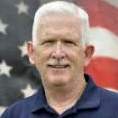I’m a former ELT chaser for CAP, and these are actually reported and worked thru USAF AFRCC at Tyndall AFB in Panama City, Florida. Typically most of ELTs that are heard are reported by pilots to tower, approach, departure or center, who (are supposed to) immediately notify AFRCC. AFRCC assigns a mission number and forwards to the local CAP wing’s operations, who assigns an incident commander. 406 ELTs are picked up by satellite by AFRCC and include a latitude and longitude which may not be precise. Doesn’t always work as well as it should.
After AFRCC contacts CAP, they assign a duty incident commander, who either dispatches a plane with a crew to do an air search, or sends a ground team if it’s a location such as on or close to an airport, or both. All are volunteers. I’ve worked all sides of these, and all I ever worked were accidental triggers or boats. But they’re all checked out. Most are in aircraft in hangers or tie downs. We used hand held radios to track them down on airport property. We weren’t allowed to shut them off (private property), but we worked with airport management and law enforcement.
if you do hear a strong signal in the air that lasts for more than five minutes, report it immediately while in the air. You could be saving someone’s life. Note on your chart exactly where you are, including any towns or especially airports nearby. Be as precise as possible, including your altitude. (The lower you are, the more precise your report becomes.)
Sounds complicated to chase and find these, but it’s not. It can be a bit time consuming but CAP and AFRCC treat these as a priority. I’ve gotten calls at 3 am, put together a small team and had them found and dealt with within three or four hours. Some I’ve worked with were myself and one other volunteer on the ground with hand held radios using a technique called “body blocking”. We have also found them by dispatching aircraft with a Becker RDF, and I have flown many practice missions and a few actual missions because these remain a real priority. I do have a few interesting and amusing stories to tell around “finds.”
The newer ELRs are 406MHz and include a GPS position within their satellite signal as noted above, but they do include a lower power 121.5 signal as well to aid in finding them. Easily tracked and found in most cases, as noted above. 97% of all ELTs triggered are false alarms, but 3% are indeed real.



